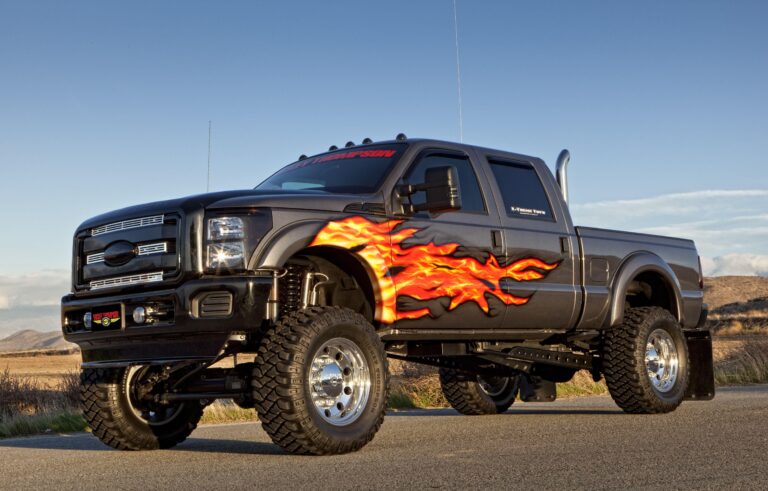Brand New Car Motors: The Heart of Modern Driving
Brand New Car Motors: The Heart of Modern Driving cars.truckstrend.com
The automotive industry is in a perpetual state of evolution, and at the core of this transformation lies the motor – the very heart that propels a vehicle forward. When we talk about "Brand New Car Motors," we’re not just referring to a single type of engine; we’re encompassing the diverse, innovative, and increasingly sophisticated propulsion systems that power the latest generation of vehicles. From the refined roar of advanced internal combustion engines to the silent surge of electric powertrains and the cutting-edge promise of fuel cells, brand new car motors represent the pinnacle of engineering, efficiency, and environmental consciousness.
Understanding these modern motors is crucial for any prospective car buyer, enthusiast, or simply anyone interested in the future of mobility. They dictate a vehicle’s performance, fuel economy, environmental footprint, and even its driving character. This comprehensive guide will delve into the intricacies of brand new car motors, exploring their types, technological advancements, practical considerations, and the exciting future that lies ahead.
Brand New Car Motors: The Heart of Modern Driving
The Diverse Landscape of Modern Propulsion: What Drives Brand New Cars?
Today’s automotive market offers a fascinating array of motor technologies, each with its unique characteristics and advantages.
1. Advanced Internal Combustion Engines (ICE)
Despite the growing emphasis on electrification, the internal combustion engine continues to be a dominant force, albeit in a highly evolved form. Modern ICE units are far more sophisticated than their predecessors, boasting remarkable improvements in efficiency, power delivery, and emissions control.
- Turbocharging and Supercharging: Forced induction systems are now commonplace, using exhaust gases (turbocharging) or mechanical compressors (supercharging) to push more air into the engine. This allows smaller engines to produce power levels traditionally associated with larger displacement engines, leading to better fuel economy without sacrificing performance.
- Direct Injection (DI): Instead of mixing fuel and air before entering the cylinder, DI systems inject fuel directly into the combustion chamber. This precise control optimizes fuel atomization and combustion efficiency, further enhancing power and reducing emissions.
- Variable Valve Timing (VVT) and Lift (VVL): These technologies dynamically adjust the opening and closing of engine valves, optimizing airflow for different RPMs and loads. This improves both low-end torque and high-end power, as well as fuel efficiency.
- Cylinder Deactivation: In some larger engines, specific cylinders can be temporarily shut down under light load conditions (e.g., highway cruising) to save fuel, reactivating seamlessly when more power is needed.
- Mild Hybrid Systems (MHEV): Often integrated with ICE, MHEV systems use a small electric motor and battery to assist the engine during acceleration, allow for longer start/stop cycles, and recover energy during braking. This provides a modest boost in efficiency and responsiveness.

2. Electric Vehicle (EV) Motors
The electric motor is at the core of the electric vehicle revolution, offering instant torque, quiet operation, and zero tailpipe emissions. EV motors convert electrical energy directly into mechanical rotation.

- Types of EV Motors:
- Permanent Magnet Synchronous Motors (PMSM): Widely used in many EVs (e.g., Tesla, Hyundai, Kia), these motors are highly efficient and power-dense, offering excellent performance and regeneration capabilities. They use permanent magnets in the rotor.
- AC Induction Motors: Often found in some earlier EVs and specific applications (e.g., some Tesla models in the front axle), these motors are robust, reliable, and do not require rare-earth magnets, though they can be slightly less efficient than PMSMs.

- Advantages: EVs offer unparalleled acceleration smoothness, a virtually silent ride, and significantly lower running costs (depending on electricity prices). Their regenerative braking systems also recover energy, improving efficiency.
- Battery Technology: The motor is only half the story; advanced lithium-ion battery packs are critical for range and charging speed, constantly evolving to become lighter, more energy-dense, and faster to charge.
3. Hybrid Electric Vehicle (HEV) Motors
Hybrids combine an ICE with an electric motor and battery, leveraging the strengths of both.
- Parallel Hybrids: Both the electric motor and ICE can directly power the wheels, either independently or together. This is the most common type.
- Series Hybrids: The ICE acts primarily as a generator to charge the battery or power the electric motor, which then drives the wheels.
- Plug-in Hybrid Electric Vehicles (PHEV): PHEVs have larger batteries than standard hybrids, allowing them to travel significant distances on electric power alone before the ICE kicks in. They can also be charged from an external power source. Hybrids offer a bridge between traditional ICE vehicles and full EVs, providing improved fuel economy and reduced emissions without range anxiety.
4. Fuel Cell Electric Vehicle (FCEV) Motors
FCEVs represent another frontier in clean mobility. Instead of a battery, FCEVs use a fuel cell stack to convert hydrogen gas and oxygen from the air into electricity, which then powers an electric motor. The only byproduct is water vapor.
- Advantages: FCEVs offer quick refueling times (similar to gasoline cars) and long ranges, with zero tailpipe emissions.
- Challenges: The primary hurdles are the limited hydrogen refueling infrastructure and the cost of hydrogen production and storage.
Key Innovations and Technologies in Modern Car Motors
Beyond the fundamental types, several overarching innovations define brand new car motors:
- Integrated Powertrain Management: Advanced Electronic Control Units (ECUs) meticulously manage every aspect of the motor’s operation, from fuel injection and ignition timing to electric motor torque and battery thermal management. This ensures optimal performance, efficiency, and reliability across all driving conditions.
- Lightweight Materials: The use of aluminum, magnesium, and advanced composites in motor components and vehicle structures reduces overall weight, improving efficiency and handling.
- NVH (Noise, Vibration, Harshness) Optimization: Engineers meticulously design motors and their mounting systems to minimize unwanted noise and vibration, contributing to a more refined and comfortable driving experience, particularly noticeable in silent EVs.
- Software-Defined Performance: Modern motors are increasingly controlled by sophisticated software, allowing for different driving modes (e.g., Eco, Sport), over-the-air updates, and even predictive maintenance.
- Thermal Management: Efficient cooling and heating systems are crucial for all motor types, especially for batteries in EVs and PHEVs, to maintain optimal operating temperatures and prolong component life.
Choosing Your Motor: Factors to Consider When Buying a New Car
The choice of motor type in a brand new car profoundly impacts your ownership experience. Here are critical factors to consider:
- Fuel Economy vs. Performance: Generally, EVs offer superior energy efficiency and instant torque for quick acceleration. Modern ICE engines balance power with efficiency, while hybrids provide a blend.
- Environmental Impact: EVs and FCEVs offer zero tailpipe emissions. Hybrids significantly reduce emissions compared to pure ICE. Consider the source of electricity for EVs (renewable vs. fossil fuels) for a complete picture.
- Maintenance and Reliability: EVs typically have fewer moving parts, potentially leading to lower maintenance costs. ICE engines require more routine maintenance (oil changes, spark plugs).
- Cost:
- Purchase Price: EVs often have a higher upfront cost, though incentives can offset this. ICE and hybrid vehicles tend to be more affordable initially.
- Running Costs: EVs have lower "fuel" costs (electricity), especially with home charging. ICE vehicles depend on fluctuating gasoline prices.
- Driving Experience: EVs offer a smooth, quiet, and responsive ride. ICE vehicles provide a more traditional engine sound and feel. Hybrids offer a blend, often switching seamlessly between electric and gasoline power.
- Infrastructure: Consider the availability of charging stations for EVs/PHEVs or hydrogen stations for FCEVs in your area.
Maintaining Your Brand New Motor: Tips for Longevity
Regardless of the motor type, proper maintenance is key to ensuring the longevity and optimal performance of your brand new car motor.
- Adhere to Service Schedules: Follow the manufacturer’s recommended service intervals for oil changes (ICE/Hybrids), fluid checks, filter replacements, and general inspections.
- Use Correct Fluids: For ICE vehicles, always use the specified grade of engine oil and other fluids (coolant, transmission fluid). For EVs, ensure the battery cooling system is properly maintained if applicable.
- Gentle Break-in Period (ICE): For brand new ICE vehicles, a gentle break-in period (avoiding high RPMs or heavy loads for the first few hundred miles) can help components seat properly and contribute to engine longevity.
- Monitor Warning Lights: Pay immediate attention to any dashboard warning lights, especially the "check engine" or "service EV system" indicators.
- Regular Inspections: Have your motor and associated systems inspected by a qualified technician regularly, even if no warning lights are on. This can catch minor issues before they become major problems.
- Charge Smart (EVs): For EVs, avoid consistently charging to 100% or letting the battery drain to 0% if possible. Follow manufacturer recommendations for optimal battery health.
The Road Ahead: Future Trends in Car Motors
The evolution of brand new car motors is far from over. Exciting advancements are on the horizon:
- Solid-State Batteries: Promising higher energy density, faster charging, and improved safety for EVs.
- Advanced ICE with Sustainable Fuels: Research into synthetic fuels (e-fuels) and hydrogen combustion engines could make ICE technology more sustainable.
- More Efficient Electric Motors: Further refinements in materials and design will lead to even smaller, lighter, and more powerful electric motors.
- Integrated Drive Units: Combining the electric motor, power electronics, and gearbox into a single, compact unit for EVs, improving efficiency and packaging.
- Enhanced Connectivity and AI: Motors will increasingly communicate with vehicle systems and external networks, allowing for predictive maintenance, optimized performance based on driving patterns, and seamless integration with autonomous driving features.
Estimated Cost Impact of Motor Types on New Car Price
It’s important to note that you don’t typically buy a "motor" separately for a brand new car; it’s an integrated component of the vehicle. The table below illustrates the general cost premium associated with different motor technologies when purchasing a new vehicle, rather than the standalone price of the motor itself. These are broad estimates and can vary significantly by manufacturer, model, and market.
| Motor Type | General Cost Impact on Vehicle (Relative to Base ICE) | Typical Purchase Price Range (Vehicle) | Key Factors Influencing Cost |
|---|---|---|---|
| Internal Combustion Engine (ICE) | Base Cost (Reference) | $20,000 – $80,000+ | Engine size, features (turbo, DI), brand, luxury level |
| Mild Hybrid Electric Vehicle (MHEV) | +5% to +10% | $25,000 – $90,000+ | Battery size, integration complexity, overall vehicle class |
| Hybrid Electric Vehicle (HEV) | +10% to +20% | $28,000 – $100,000+ | Battery size, electric motor power, dedicated hybrid components |
| Plug-in Hybrid Electric Vehicle (PHEV) | +20% to +40% | $35,000 – $120,000+ | Larger battery, more powerful electric motor, charging hardware |
| Battery Electric Vehicle (BEV) | +30% to +70% | $38,000 – $200,000+ | Battery capacity (range), motor power, charging capabilities |
| Fuel Cell Electric Vehicle (FCEV) | +50% to +100%+ | $60,000 – $100,000+ (Limited Availability) | Fuel cell stack complexity, hydrogen storage, nascent market |
Note: These are generalized estimates. Actual prices are subject to market conditions, government incentives, specific vehicle models, and regional variations.
Frequently Asked Questions (FAQ) about Brand New Car Motors
Q1: Do brand new ICE engines require a "break-in" period?
A1: While modern manufacturing tolerances are much tighter, a gentle break-in period (typically the first 500-1,000 miles) is still recommended for new ICE vehicles. Avoid prolonged high RPMs, heavy loads, and sudden acceleration/braking to allow components to seat properly.
Q2: How long do EV batteries last in brand new cars?
A2: Most EV manufacturers offer warranties on their batteries for 8 years or 100,000 miles, with many expected to last significantly longer (10-15 years or more) before significant degradation occurs.
Q3: Are hybrid car motors more complex to maintain?
A3: Hybrid vehicles combine both ICE and electric components, but routine maintenance is often similar to ICE vehicles, with additional checks for the electric system. Their regenerative braking also reduces wear on traditional brake components.
Q4: What is "range anxiety" for electric vehicles?
A4: Range anxiety is the fear that an EV will run out of power before reaching a charging station or destination. This is diminishing as EV range increases and charging infrastructure expands.
Q5: Is it true that electric motors require no maintenance?
A5: While electric motors themselves have very few moving parts and require minimal maintenance compared to ICE, EVs still need regular checks for tires, brakes (though less wear due to regenerative braking), suspension, cabin filters, and battery health monitoring.
Q6: Can I use regular gasoline in a hybrid car?
A6: Most hybrids use regular unleaded gasoline, but always refer to your vehicle’s owner’s manual for the specific fuel type recommended by the manufacturer.
Q7: How do I know which motor type is right for me?
A7: Consider your daily commute, access to charging/fueling infrastructure, budget, environmental priorities, and desired driving experience. Test driving different motor types is highly recommended.
Conclusion
The world of brand new car motors is a testament to relentless innovation and a clear indicator of the automotive industry’s trajectory towards a more sustainable and efficient future. Whether powered by the refined combustion of gasoline, the clean surge of electricity, or the promising potential of hydrogen, these sophisticated propulsion systems are designed to deliver performance, reliability, and increasingly, environmental responsibility. Understanding the nuances of each motor type empowers consumers to make informed decisions that align with their needs, values, and the evolving landscape of personal transportation. As technology continues to advance at an astonishing pace, the motors of tomorrow’s brand new cars promise even greater efficiency, power, and a cleaner footprint, truly driving us into a new era of mobility.





